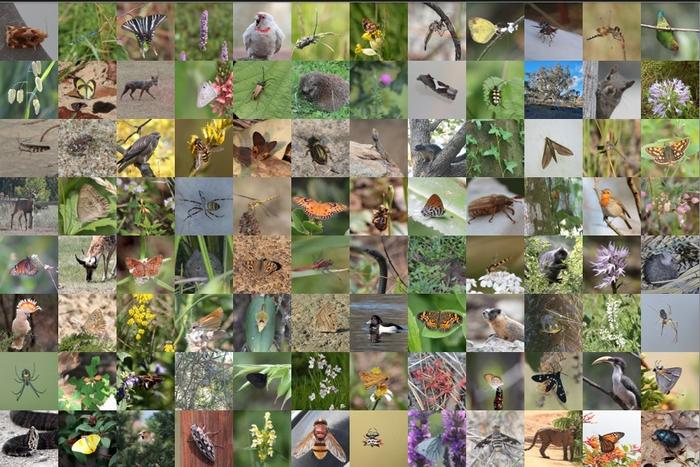Highlights:

Credit: Photo courtesy Corey Callaghan.
Highlights:
- Human actions influence the success and how species spread throughout geographic locations.
- This is why monitoring wildlife biodiversity is critical for scientists and policymakers to understand and preserve the present state of flora and fauna.
- A study led by University of Florida scientists published today in the journal of Trends and Ecology and Evolution advocates for change to promote standardized practices in the field – a practice that has been missing from the science.
Assessing wildlife populations, as well as understanding the dynamics of their numbers and distributions across various regions, is a critical measure known in science as abundance.
“This task presents significant challenges due to the multifaceted nature of biodiversity, coupled with the variety of methods used in studies, each yielding varied outcomes for distinct objectives,” said Corey Callaghan, assistant professor of global ecology at UF/IFAS Fort Lauderdale Research and Education Center. “This diversity in approach has led to a lack of standardized practices within the field.”
A study led by University of Florida scientists at the Institute of Food and Agricultural Sciences (UF/IFAS) published today in the journal of Trends and Ecology and Evolution probes the nuances of biodiversity monitoring, advocating for changes that promote a standardized approach.
At the heart of the paper is a comparison of two metrics scientists use to monitor biodiversity – relative and absolute abundance. The authors shed light on their fundamental distinctions and indicate their advantages and disadvantages, but ultimately advocate for absolute abundance to arrive at direct information about species population sizes.
Absolute abundance means counting all the animals in an area with the intention of acquiring an exact total. Meanwhile, relative abundance arrives at an estimate of how many animals there are compared to each other or compared to a certain standard. Both methods have their own ways of collecting data.
“The insights from this paper aim to promote a more nuanced and informed approach to biodiversity monitoring, influencing both scientific research and conservation policy,” he said. “We hope to engage a wide audience, including ecologists, conservationists, policymakers, and citizen scientists, highlighting the importance of methodological choices in biodiversity monitoring.”
Absolute abundance will arrive at a more precise number and is harder to collect because it will involve counting or figuring out how many animals are in a unit of space. This method will generally have some errors in measurements with a degree of uncertainty, depending on species traits.
Relative abundance is usually less complicated and doesn’t arrive at an exact number but helps see trends or differences between areas or times. This simplicity makes it attractive in that it allows for the assistance of citizen scientists to help collect data.
“Both are important for understanding and protecting biodiversity,” said Callaghan. “The goal is to encourage the adoption of methodologies that best capture the true state of biodiversity, enabling more effective conservation actions and policy decisions.”
Understanding the quantity of organisms and how they’re changing over time is crucial. Different methods for counting species have been debated, but using absolute abundance — the actual number of individuals — often gives the most accurate picture, according to the study’s authors.
“It provides a sense of the real size of a population, which is important for conservation efforts,” he said. “Overall, absolute abundance is crucial for understanding the real numbers of species, but it’s important to use the right methods and scales to interpret the data accurately.”
For the scientific and citizen science communities, the authors hope to spark a dialogue on the necessity of integrating both relative and absolute abundance measurements into biodiversity monitoring practices.
“We envision a collaborative effort to refine data collection and analysis methods, making them more accessible and actionable for conservation purposes,” he said. “This includes encouraging the development and sharing of best practices that can accommodate the complexities of different ecosystems and species.”
Journal
Trends in Ecology & Evolution
DOI
10.1016/j.tree.2024.01.012
Article Title
Purchase Subscribe Save Share Reprints Request Population abundance estimates in conservation and biodiversity research
Article Publication Date
19-Mar-2024




